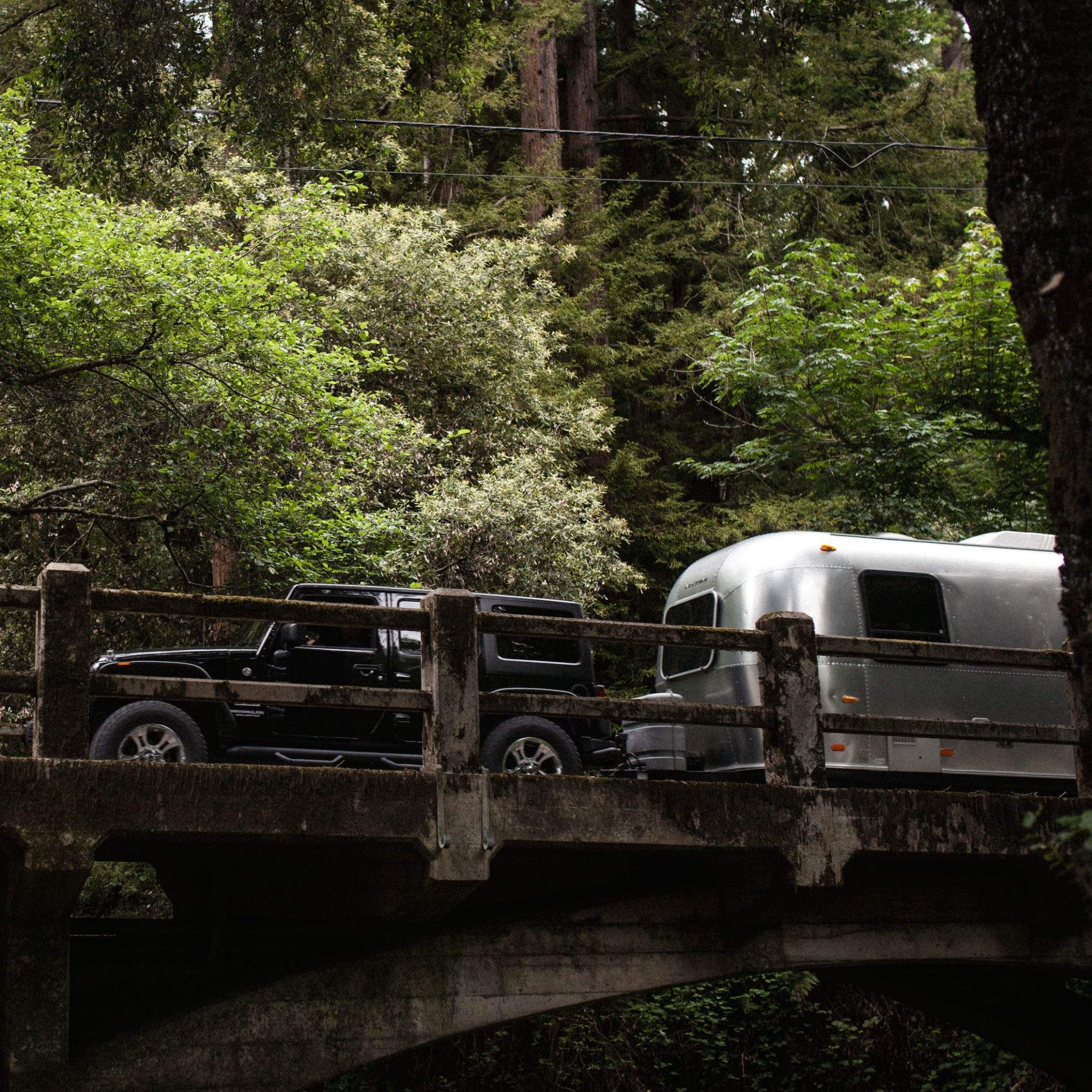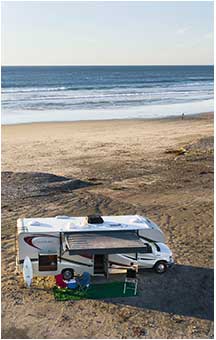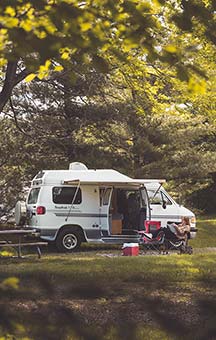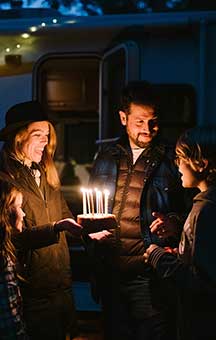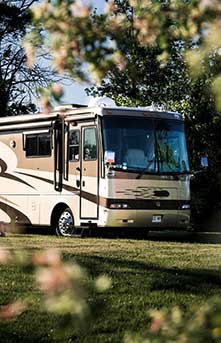For those who have spent a while on the road, boondocking may be an ordinary part of your life. But those who are new to RVing may be a little unfamiliar with the concept. If you’re wondering what boondocking is, we have answers for you! In this boondocking guide, we’ll break down:
Let’s get to it!
What is boondocking camping?
Boondocking is more than just a fun word to say. It’s a phrase that RVers use to describe free camping in places without amenities such as sewer, water, or electric hookups. The word might instantly conjure up images of parking down a dark, forest road on open land. While this may sometimes be the case, boondocking doesn’t always mean going too far from civilization. Boondocking for RVers is often just staying overnight in the parking lot of an RV-friendly business. You might see this also described as “dry camping”, “dispersed camping”, or simply “free camping”.
Where can you go RV boondocking?
There are many places across the country that allow RV boondocking. Let’s take a look at three types of boondocking locations.
Public lands
Some of the most popular boondocking locations are undeveloped or primitive campsites on public lands. If you’re looking to get away from the crowds in forests, beaches, and more, this is for you! The United States Bureau of Land Management allows boondocking (referred to as “dispersed camping”) on most public lands as long as it doesn’t conflict with other authorized uses or isn’t specifically closed to camping. Generally, your stay on public lands is limited to 14 days. These campsites are located along most secondary roads on BLM lands and may not always be marked. Be sure to check with the BLM about rules for setting up camp at these sites.

A little bit of research will be required if you’re looking to park in a specific area or region. Boondocking.org is a good resource.
RV-friendly businesses
As any full-time RVer can attest, there are many businesses that allow overnight parking. Some Walmarts, Cracker Barrels, and truck stops welcome RVs to park overnight. The Allstays app is an excellent resource when looking for a parking lot that allows overnight parking. Benefits to staying at these places include well-lit parking lots and the occasional wi-fi hotspot like you can find at certain Pilot Travel Centers.
With friends
Passing through a town where a friend or family member lives? Ask about parking your rig in their driveway for a night, otherwise lovingly known as moochdocking. You’ll get to visit with your friends and have a place to stay. Be careful not to stay too long or take advantage of your friend’s hospitality!
How do I boondock?
How you go about boondocking will depend on one main factor: how long you plan to stay. RV YouTubers Drivin’ and Vibin‘ offer some of their best tips in the video below.
One-night stays
Free camping for one night is usually pretty simple. Boondocking is a convenient way to save money while you’re in between destinations. Rest stops, certain truck stops, and Walmart stores can easily be found off interstate exits, so it’s a convenient alternative to staying in an RV park for just one night. Always make sure to get permission from a manager before parking for the night. Some locations may prohibit overnight stays in the parking lot. The Allstays app is helpful for this because it includes notes from other users detailing whether a particular store has allowed overnight parking in the past. If looking for a truck stop, check for a Flying J or Pilot Travel Centers that have sites designated for overnight RV parking.
Boondocking for one night typically doesn’t require much prep. Because you’ll probably be close to food, drink, and restrooms, you don’t need to worry about filling your water tank or gathering other supplies.
Multi-night stays
Some campers prefer boondocking as their main form of camping. If you plan right, you can find a good RV boondocking area on public land that allows for longer stays. These types of trips require a little more research and prep ahead of time. You’ll want to make sure you have all the supplies needed for dry camping, including a way to power your rig, plenty of fresh water in your water tank, and food to last the duration of your stay.
Get started with your boondocking adventure
Whether you’re planning on boondock camping out of necessity or as your main form of fun, it’s important to be prepared. Always be sure you have permission to park your rig before setting up camp and bring enough food, water, and supplies for the duration of your stay.
Do you have questions about boondocking or tips to share? Let us know in the comments or on Facebook, Twitter, or Instagram!
